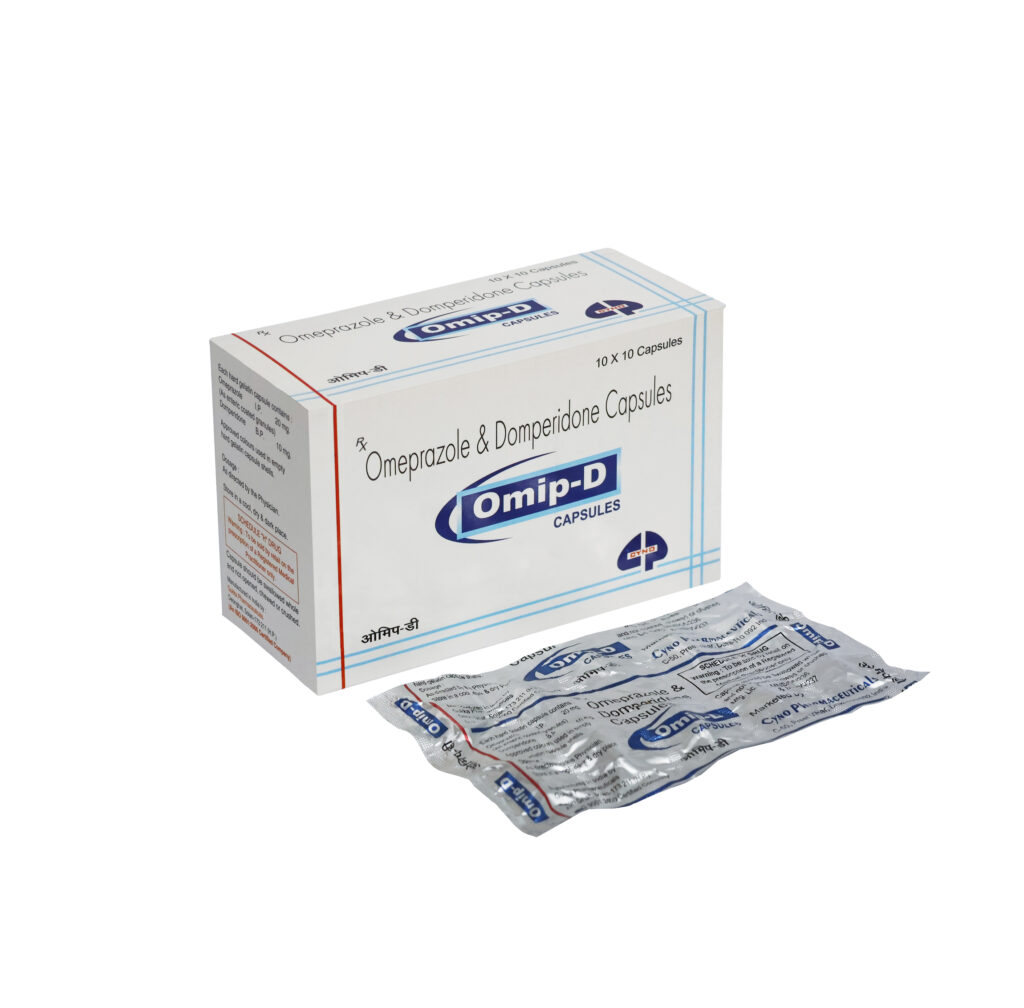OMIP D:
This combination medication contains a proton pump inhibitor and antidopaminergic agent, prescribed for ulcers, indigestion and acid stomach.
Omeprazole is a proton pump inhibitor used in the treatment of dyspepsia, peptic ulcer disease, gastroesophageal reflux disease,laryngopharyngeal reflux, and Zollinger-Ellison syndrome.
Mechanism of Action: Omeprazole is a selective and irreversible proton pump inhibitor. It suppresses stomach acid secretion by specific inhibition of the H +/K + ATPase system found at the secretory surface of gastric parietal cells. Because this enzyme system is regarded as the acid (proton, or H+) pump within the gastric mucosa, omeprazole will inhibit the final step of acid production.
Omeprazole will also inhibit both basal and stimulated acid secretion irrespective of the stimulus.
Pharmacokinetics : The absorption of omeprazole takes place in the small intestine and is usually completed within 3–6 hr. The systemic bioavailability of omeprazole after repeated dose is about 60%
Omeprazole is completely metabolized by the cytochrome P450 system, mainly in the liver. Identified metabolites are the sulfone, the sulfide and hydroxy-omeprazole, which exert no significant effect on acid secretion. About 80% of an orally given dose is excreted as metabolites in the urine and the remainder is found in the feces, primarily originating from bile secretion.
Adverse effects: The most frequent significant adverse effects occurring in at least 1% of patients include:
Domperidone: is a peripheral specific blocker of dopamine receptors. It is administered orally, rectally or intravenously. Domperidone is given in order to relieve nausea and vomiting; to increase the transit of food through the stomach; and to increase lactation by release of prolactin.
Mechanism of Action: Domperidone is a peripheral dopamine (D2) and (D3) receptor antagonist. It provides relief from nausea by blocking receptors at the chemo-receptor trigger zone.
Pharmacokinetics:
Oral absorption of Domperidone is found to be 46.5%. Volume of distribution is found to be 5.7l/Kg and Plasma protein binding is 91-93%. Presystemic metabolism is noted to be 85% and metabolism is reported extensively by liver & Gut. Renal Excretion accounts for major 31% and 66%in feces and plasma half life is 12-16 hr (oral), 7.5 hr (parentral)
Information on this website is for general awareness only and not a substitute for professional medical advice, diagnosis, or treatment. Always consult a qualified doctor before using any product or taking any medical action.
Cyno and its affiliates make no warranties—express or implied—regarding the accuracy or completeness of the information provided. Use of this website and reliance on its content is at your own risk. Cyno shall not be liable for any loss or damage arising from such use. Content may be updated or changed without notice.

WhatsApp us